Sealing Up the Cracks
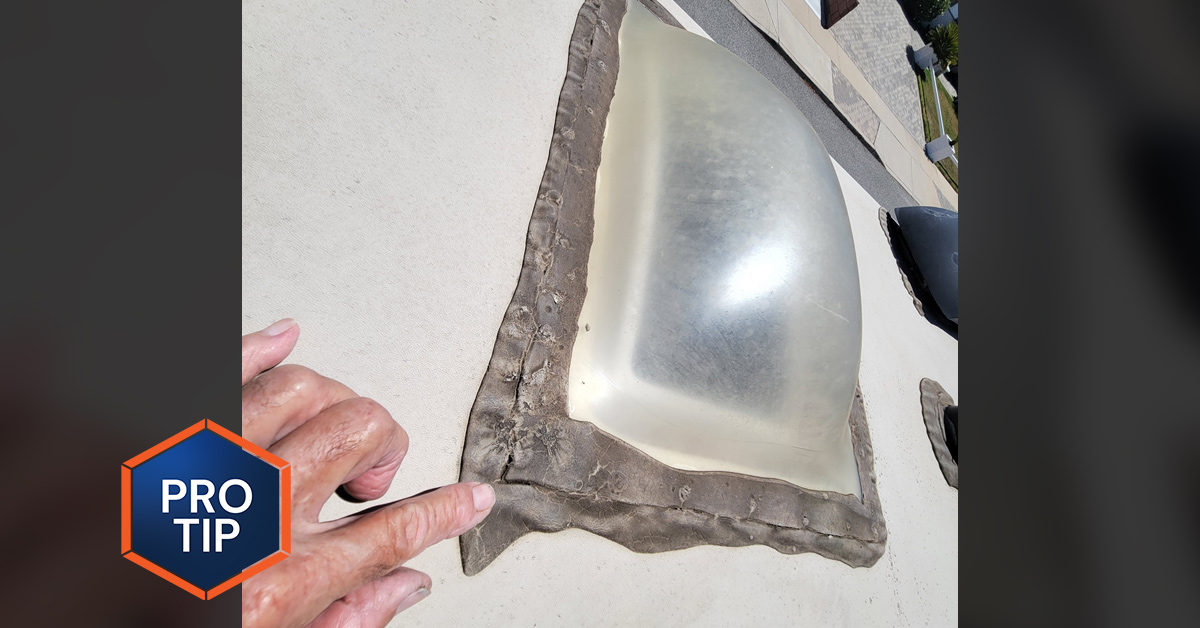
An annual inspection of the roof will undoubtedly reveal a few areas where the old sealant has become damaged or cracked from exposure to intense sunshine. Keeping a tube of Dicor Self-Leveling Lap Sealant and a good quality caulking gun in your tool kit makes it possible to repair problem areas before or during a trip.
For some reason, skylights in trailers and motorhomes always seem take the brunt of damage from premature cracking. Perhaps it’s the intense heat that develops between the inner and outer domes that lead to nasty cracking; perhaps it’s owner neglect. In either case, any breaches must be sealed before it’s too late. Fortunately, it may not be necessary to do an entire scrape and seal — which is labor-intensive and takes a lot of time.
As a result of an annual roof inspection, cracks were discovered on this subject trailer and, since the owners were heading to Canada, there was only enough time to inspect the areas and reseal as necessary. The need for a full scraping and re-seal will be determined at a later date, but in this case, it was imperative to make sure the roof was able to withstand potential rainstorms during the trip. Having the right tools, cleaner and sealant on hand made snap repairs possible.
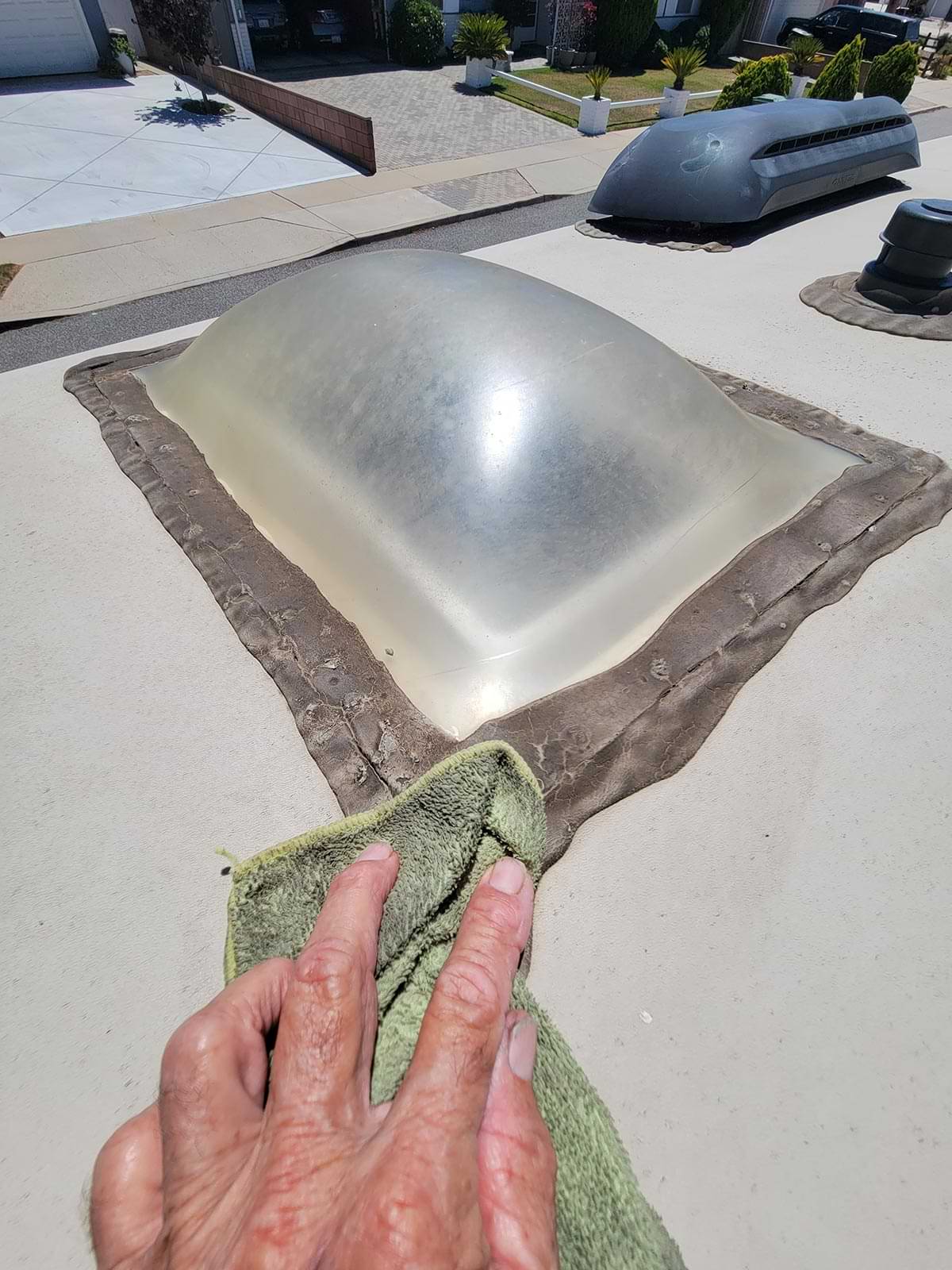
After the inspection — especially around the skylights and common roof vents — I found a few areas that needed attention. Left untreated, these smaller cracks are destined to expand and lead to water leakage. Before re-sealing, you will need some type of industrial product like Oil Eater, a powerful cleaner and degreaser that does an amazing job of lifting dirt, oil and grease from washable surfaces. A two-pack of 32-ounce spray bottles of Oil Eater Cleaner and Degreaser is available from Amazon for only $14.79. Keep this stuff in your storage compartment; it has numerous uses for cleaning up greasy messes, including those on concrete.
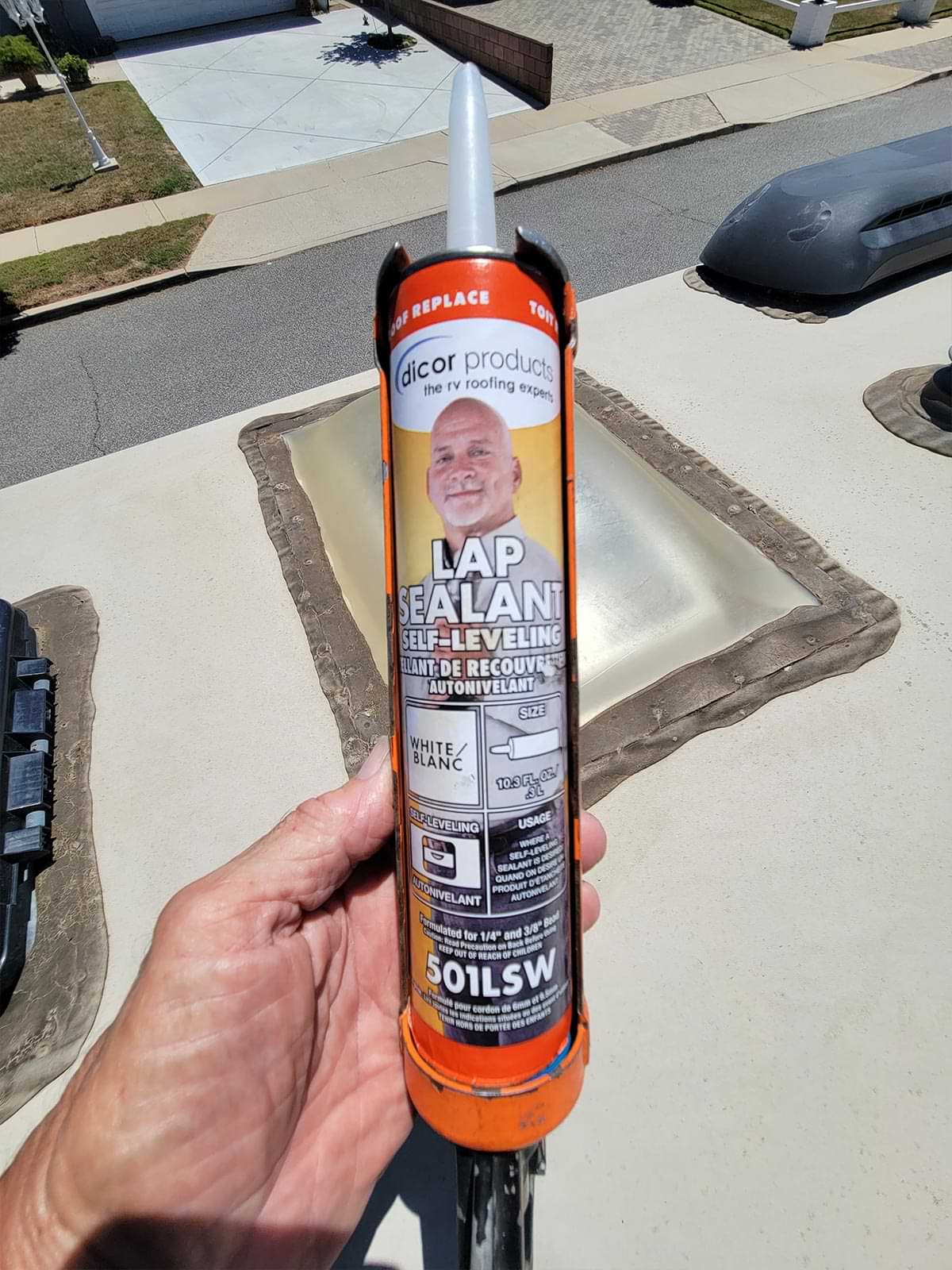
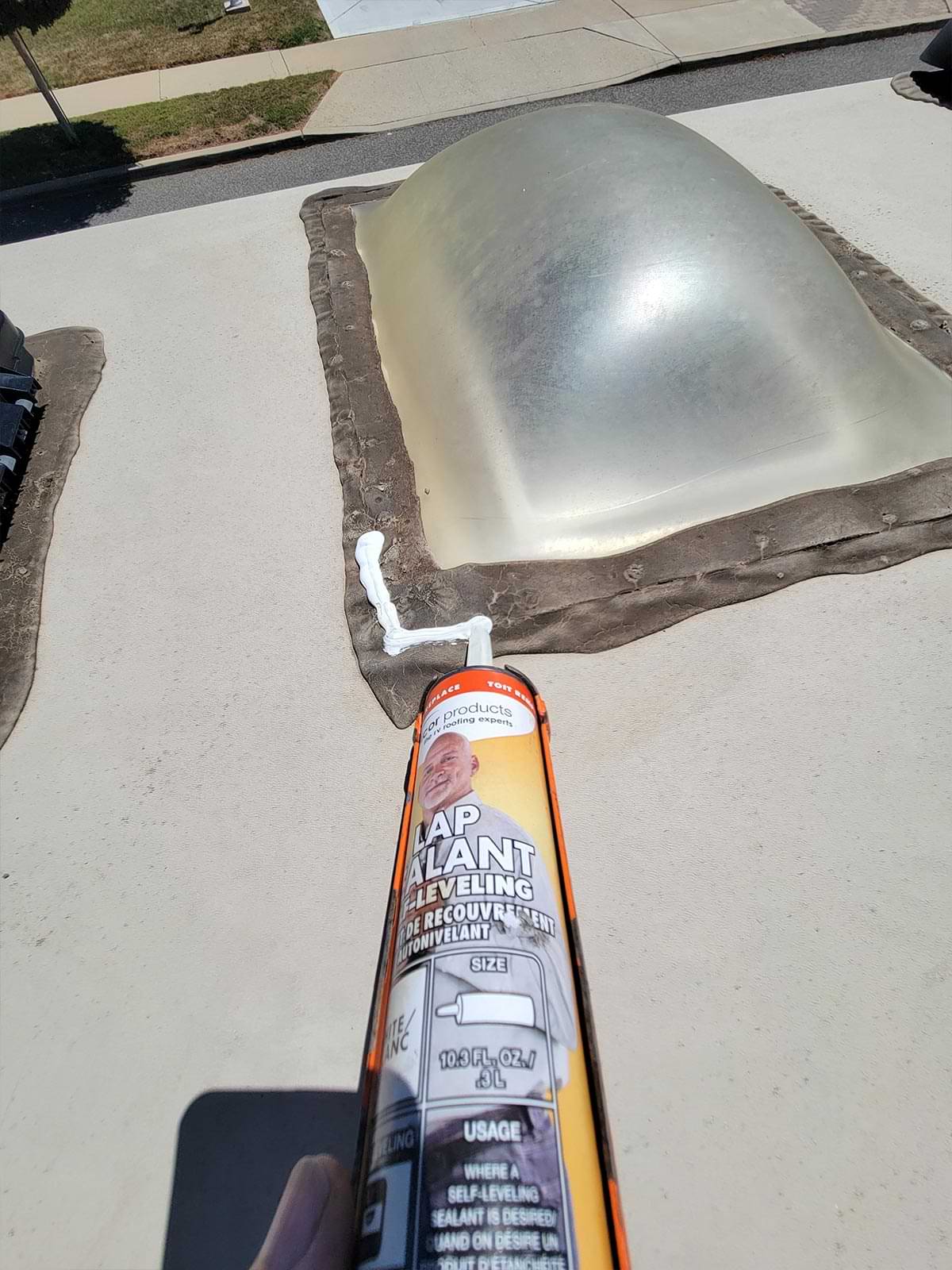
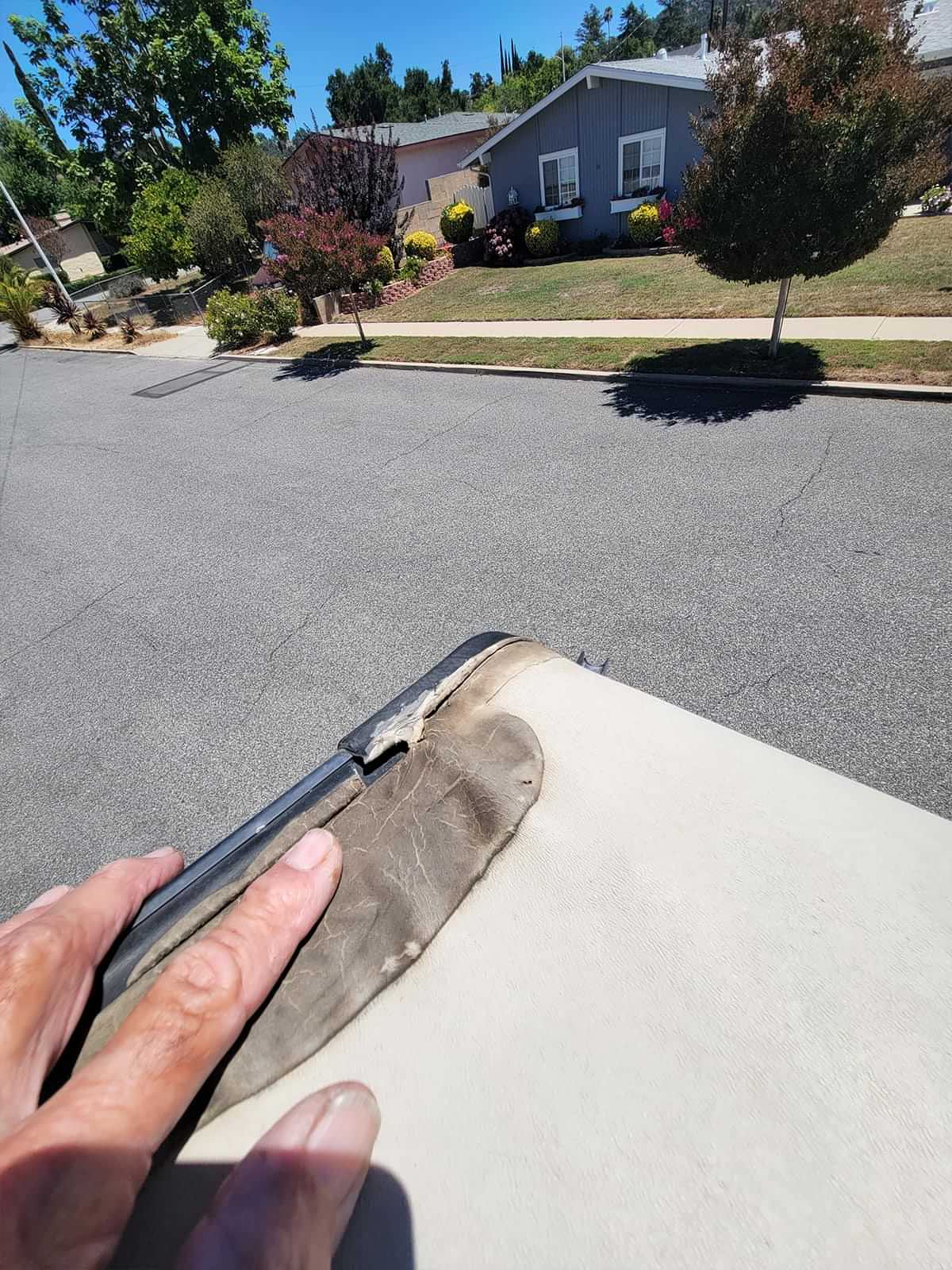
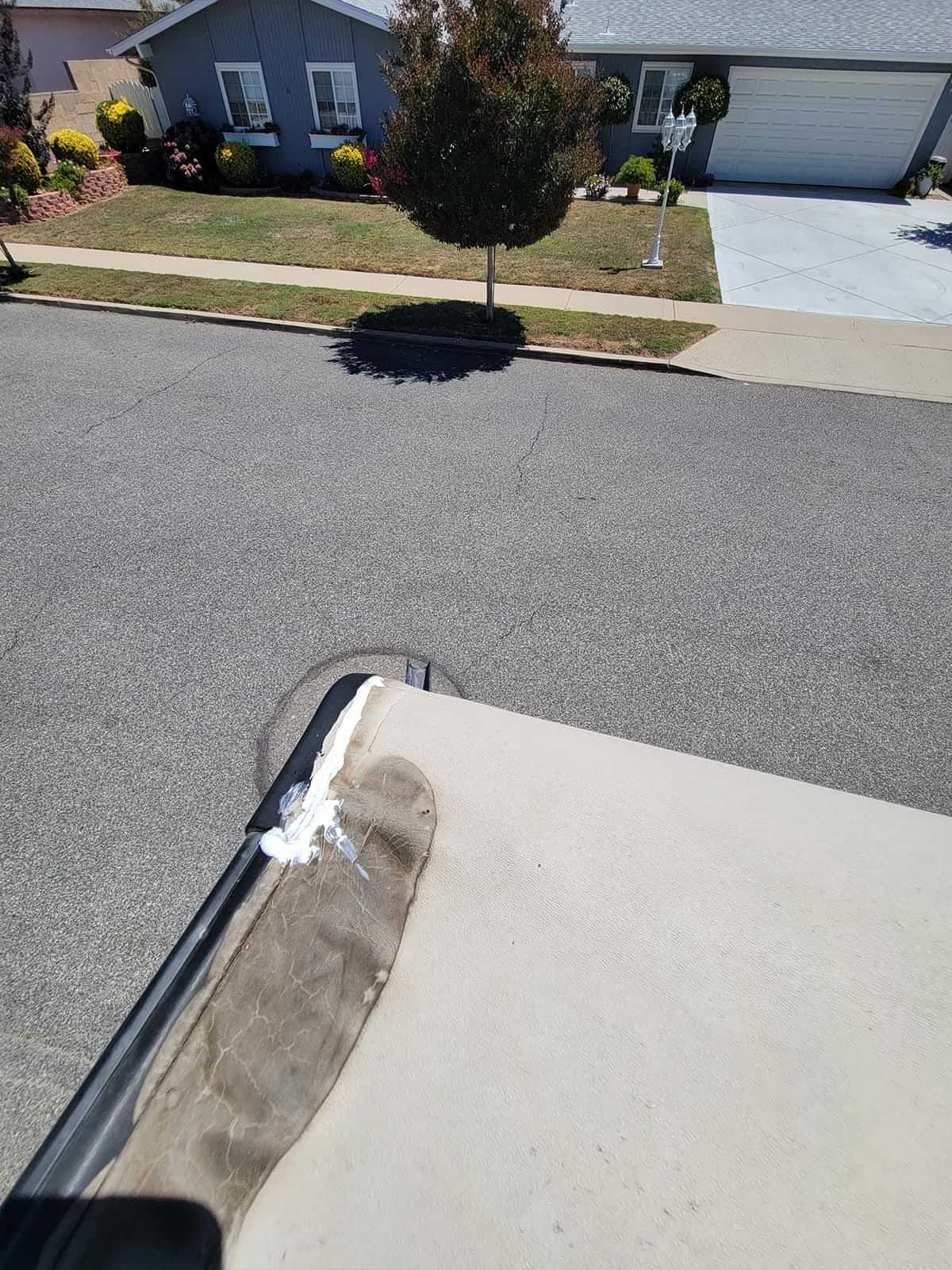
After the targeted areas were completely dry, the sealant was applied along the cracks and crevices that have opened. If you’re not experienced with a caulking gun, test your control of the flow on a piece of cardboard. This sealant also works well on the roof molding transition seams; do not use this sealant on a vertical surface, as it will run downward and make a mess. If you’re working in a sensitive area where you need to apply a straight line of sealant, put some masking tape down on either side and leave it there until the sealant dries enough to hold its form. Dicor’s self-leveling sealant will dry to touch in 30 to 60 minutes, depending on the weather. Be careful that you don’t accidentally step on the freshly-applied sealant — it will ooze out onto the dry membrane areas and, again, make a mess.
Keep the caulking gun and the Dicor sealant handy. There’s no question that more cracks may appear around the vents and skylights over time — and you never know when you’ll need some of this stuff to make repairs from an “oops” moment.
Already a Subscriber? Click here for Access to the Full Issues.

